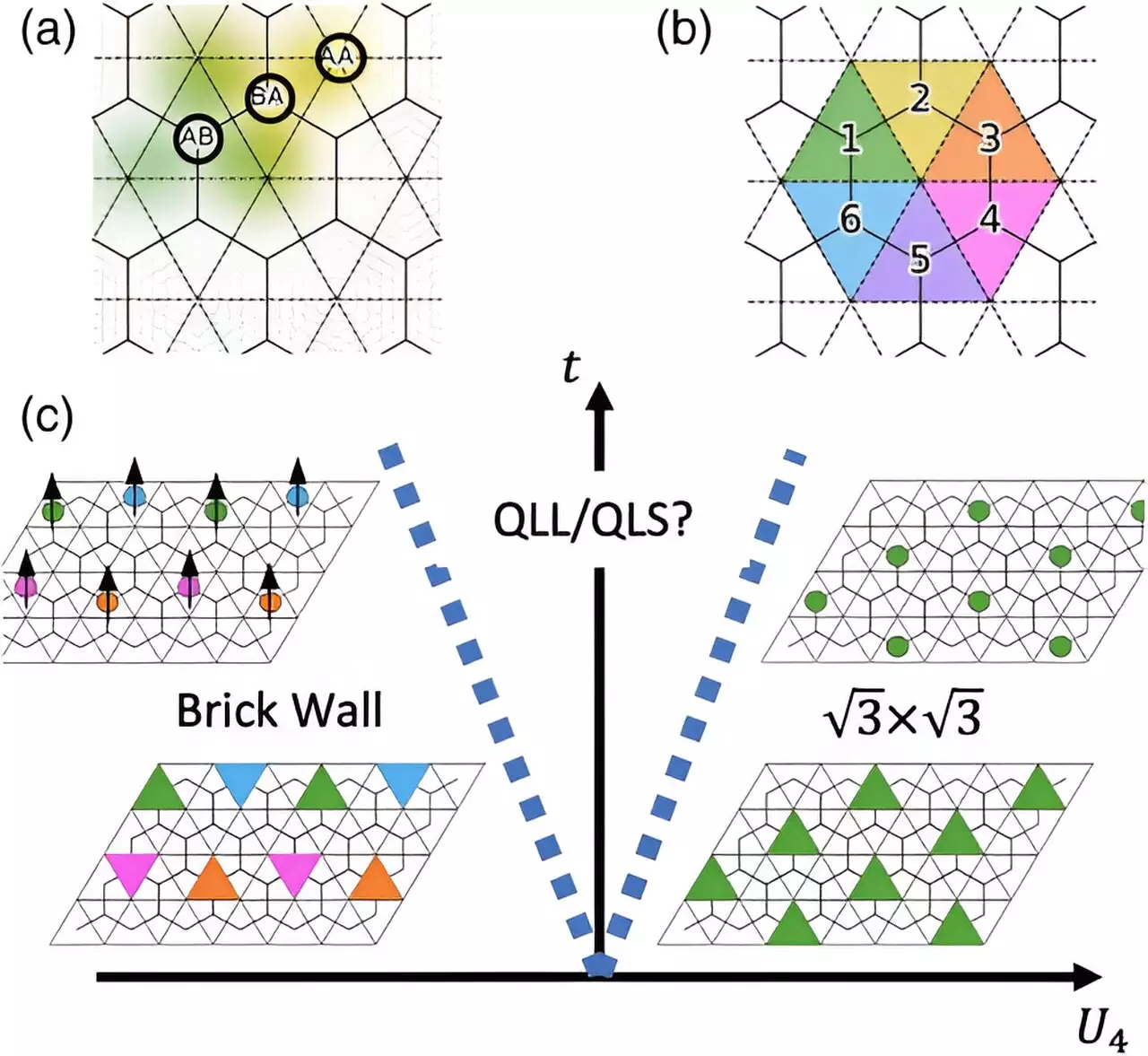Fractionalization, the phenomena of a collective state of electrons carrying a charge that is a fraction of the electron charge, has long been a dream for condensed matter physicists. The realization of such states without the need for a magnetic field would not only be a triumph of strong interaction among electrons but also hold great potential for technological advancements such as quantum computing. In a recent publication titled “Fractionalization in Fractional Correlated Insulating States at n ± 1/3 Filled Twisted Bilayer Graphene,” researchers in the Kim Group at Cornell University propose a new theoretical framework to achieve fractionalization without the reliance on a magnetic field.
Traditionally, achieving fractionalization has required the use of magnetic fields to suppress kinetic energy and amplify interaction effects. However, the limited availability of strong magnetic fields in specialized labs has sparked interest in finding alternative strategies. The Kim Group, known for their out-of-the-box thinking, turned to the unique properties of twisted bilayer graphene (TBG) lattice to explore new avenues.
One of the peculiar aspects of electrons in twisted bilayer graphene is the constraint placed on their wave function. Unlike traditional graphene systems, where the wave function is centered at lattice sites, in TBG, the wave function must be spread over multiple moiré lattice sites. This spread takes on an anisotropic, three-leaf clover shape. Leveraging these moiré graphene systems, the researchers propose the existence of fractional correlated insulator phases characterized by various properties.
In these proposed phases, excitations, or particles, carry fractional electric charges, which is a hallmark of fractionalization. These fractional excitations also exhibit interesting properties such as being “fractonic,” meaning they can only move in certain directions. Furthermore, an emergent symmetry that unifies the behavior of these fractional excitations has been identified. This discovery opens up new possibilities for exploring novel theoretical concepts of emergent symmetries and fractonic dynamics in physical systems.
The work done by the Kim Group is just the tip of the iceberg. While the theoretical framework for achieving fractionalization without a magnetic field has been proposed, experimental confirmation is necessary. The researchers are actively collaborating with experimental colleagues to verify their predictions and delve deeper into the potential of fractionalization. The field of condensed matter physics has only scratched the surface, and the journey towards fully understanding and harnessing fractionalization is still ongoing.
The pursuit of observing fractionalization without the need for a magnetic field holds immense promise for the field of condensed matter physics. The work conducted by the Kim Group at Cornell University offers a new perspective by leveraging the unique geometric properties of twisted bilayer graphene systems. The proposed existence of fractional correlated insulator phases opens up exciting possibilities for exploring emergent symmetries and fractonic dynamics. As researchers continue to unravel the mysteries of fractionalization, the potential for revolutionary technological applications such as quantum computing awaits.



Leave a Reply